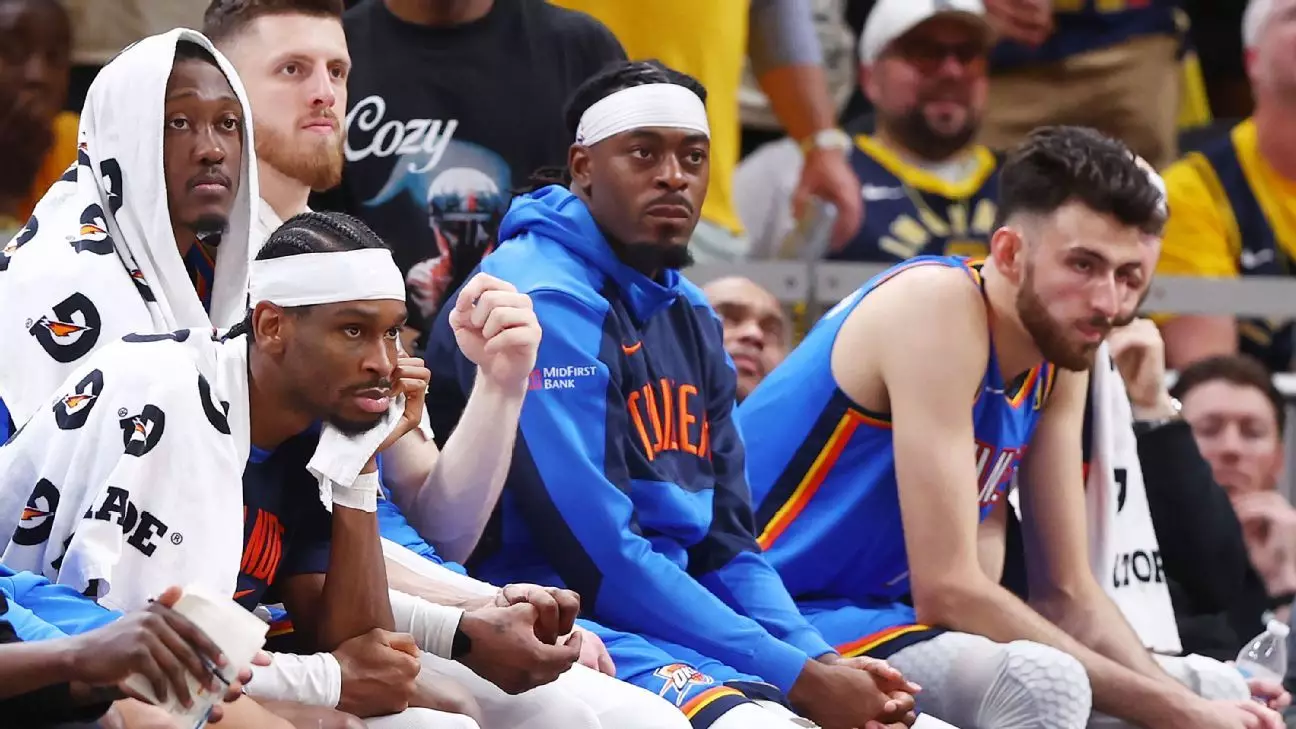In a crucial Game 6 that could have solidified their standing as champions, the Oklahoma City Thunder faltered in a shocking 108-91 defeat to the Indiana Pacers. Expectations were high as the Thunder aimed for their first championship since transitioning to Oklahoma City. However, their lackluster performance left fans and analysts questioning not only their mental preparedness but also their tactical readiness. Shai Gilgeous-Alexander, the team’s star player, did not mince words in the postgame analysis, admitting, “We sucked tonight.” This blunt acknowledgment of disappointment underlined the weight of the missed opportunity and the urgency they now face as they prepare for a decisive Game 7.
The Weight of Mistakes
One of the starkest indicators of the Thunder’s troubles was their inability to maintain possession, highlighted by a staggering 21 turnovers. Gilgeous-Alexander himself was responsible for a hefty portion of these, committing eight mistakes that tied his playoff high. This dismal statistic wasn’t merely a reflection of individual errors; it represented a collective breakdown in focus and execution. Coach Mark Daigneault’s disappointment echoed throughout the locker room, emphasizing that their struggles were not isolated to a single player but spread across the entire roster. The Pacers efficiently capitalized on this lack of precision, prompting question after question about the Thunder’s mental state in a moment they had long been gearing up for.
A Regression in Offensive Strategy
Offensively, the Thunder faced multifaceted challenges. They stumbled to an abysmal shooting percentage—38.2% through the first three quarters—contrasting sharply with their usual performance standards. The missed opportunities included just three successful three-point shots out of twenty attempts by the end of the third period. Jalen Williams articulated the struggle best, describing the offense as “sticky,” hinting at their inability to flow fluidly, which had characterized their earlier successes in the series. Each failed attempt to penetrate the Pacers’ defense forced them into a cycle of stagnation that neglected the necessary teamwork and trust crucial for their game plan. As they repeatedly faced a set defense, the Thunder’s offensive problems were magnified, challenging their ability to adapt and pivot as the situation demanded.
Defensive Deficiencies and Lack of Engagement
Despite entering the match with tactical plans, Oklahoma City’s defensive efforts fell flat. The Pacers, known for their aggressive full-court pressure, opted for a more restrained approach yet still found ways to exploit the Thunder’s breaks. This uncharacteristic vulnerability was emblematic of a broader issue: the team’s lack of engagement. Gilgeous-Alexander’s recognition of the Pacers’ heightened effort serves as a stark reminder of the importance of intensity, especially in a high-stakes environment. The comment underscored an alarming trend where the Thunder appeared to falter under the pressure they had previously embraced.
The Stakes of Game 7
Now, with everything on the line in Game 7, the Thunder must confront their previous failures. The stakes couldn’t be higher. A chance to win the franchise’s first championship is at hand but hinges on their ability to learn from the mistakes laid bare in Game 6. No longer can they rely solely on individual greatness; success will require a cohesive effort. This is not merely a game of skill or talent, but a test of mental fortitude that forces them to channel the lessons learned, build from their blunders, and reclaim their strengths.
In the lead-up to Game 7, the narrative won’t just be about the title on the line but also about the resolve of a team forced to reckon with their performance. As the Thunder regroup, the attention will shift toward their ability to trust one another, maintain composure, and step onto the court with the intensity they displayed earlier in the series. Whether they can transform the grim lessons of Game 6 into empowering strategies for success will define their legacy—both as individuals and as a franchise.


Leave a Reply